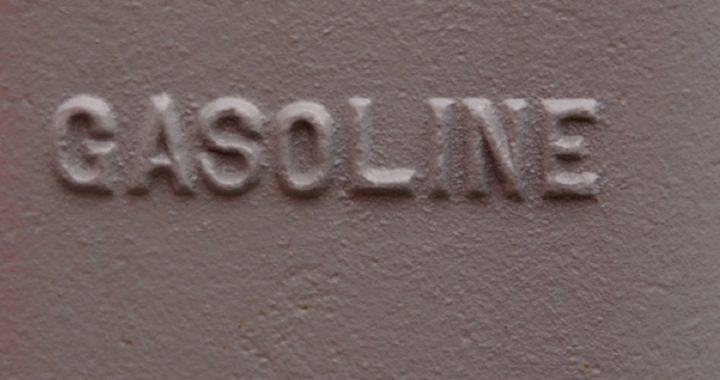
It made headline news when an OnCue Express station in Oklahoma City dropped its price for regular unleaded gasoline to $1.99 gallon on Wednesday. What didn’t make the headlines is what happened next: Drivers seeking to save a few pennies created long lines at OnCue, and so another station down the street, responding to the competition, cut its price to $1.98 a gallon. By the end of the day, another station located in nearby Moore, Oklahoma, cut its price to $1.95 a gallon.
Gas wars are back, helping consumers and providing living, breathing proof that, despite everything, the free market still works.
Many factors are driving the price of gas down, and it’s not just the shale revolution in North Dakota and Texas, either. It’s OPEC, Libya, China, Mother Nature, CAFÉ, winter blends, and consumer confidence.
The savings are enormous and are likely to get even larger. Savings at the gas pump are estimated by Goldman Sachs to reach $75 billion over the next 12 months thanks to the huge drop in prices — from $3.75 a gallon in July to $2.75 now (according to AAA). Traders in the futures market are pricing wholesale gasoline for January delivery at $1.77 a gallon. Add in state and federal taxes, refining costs, delivery and profit, and gas prices across the country could follow OnCue’s lead shortly.
OPEC used to be the biggest player in the oil business, but its influence has been severely reduced thanks to fracking. In what some are calling a deliberate move to finesse marginal American oil producers, OPEC is continuing to produce at near maximum capacity, even going in the hole while doing so. It’s a classic poker gamble: Do they have the cards in their hand sufficient to force other producers to fold, or not?
As well, a pipeline in Libya that was shut down earlier this year is now back online. China is now exporting oil, a move that surprised many and suggests to others that that huge energy consumer’s economy is faltering to the extent that it cannot use internally all the oil it produces.
In the past Mother Nature has not been kind to refineries along the Gulf Coast. Remember Hurricane Katrina? Gas prices jumped $.50 a gallon as supply was severely limited. Or how about Hurricane Isaac in the summer of 2012, which shut down plants refining more than a million barrels a day. This year, there were only two storms worth naming — Ingrid and Humberto — neither of which roiled the Gulf.
There’s also the impact of the Corporate Average Fuel Economy (CAFÉ) regulations that trace back to the oil crisis of 1973. As those standards continue to ramp up, vehicles continue to get better gas mileage.
And now that summer is over, people are driving less. It happens every year after Labor Day: Summer vacations end, school starts, beaches and amusement parks close, and temperatures drop, all of which encourage people to stay home.
Winter blends of gas cost the refineries less, and that savings shows up at the pump as well. But perhaps the biggest factor of all has nothing to do with crude oil prices, OPEC, or Mother Nature. In a remarkably downbeat report just issued from the Conference Board, consumer confidence in both the short and longer runs has declined sharply. Whether measuring business conditions (present and future), the job market (current and anticipated), or income growth, consumers are decidedly negative. Wrote Lynn Franco, a Conference Board director:
Consumer confidence retreated in November, primarily due to reduced optimism in the short-term outlook.
Consumers were somewhat less positive about current business conditions and the present state of the job market; moreover, their optimism in the short-term outlook in both areas has waned.
According to the board, the percentage of consumers expecting business conditions to improve over the next six months decreased from 19.4 percent to 17.6 percent, while those expecting business conditions to get worse rose alarmingly, from 8.9 percent to 10.7 percent in just one month. One of the key findings from the board’s report is that consumers expecting an increase in their incomes fell, thus putting into question whether the drop in gas prices will really provide a stimulus to the economy, or whether the savings will simply be shifted elsewhere as the cost of living continues its inexorable march higher.
Perhaps the beleaguered consumer is anticipating the next tax increase from Washington: on gasoline. Some lawmakers are pointing out that the current federal gasoline tax — 18.4 cents on every gallon — not only hasn’t changed since 1993, more than 20 years ago, but it wasn’t indexed for inflation. Something must be done!
When President Obama was inaugurated in January 2009, drivers were paying just $1.59 a gallon. When he leaves office in January, 2017, who’s to say that drivers won’t be paying at least twice that? In the meantime steadily declining prices at the pump are, and will continue to be for some time to come, a welcome relief.
A graduate of an Ivy League school and a former investment advisor, Bob is a regular contributor to The New American magazine and blogs frequently at www.LightFromTheRight.com, primarily on economics and politics.



